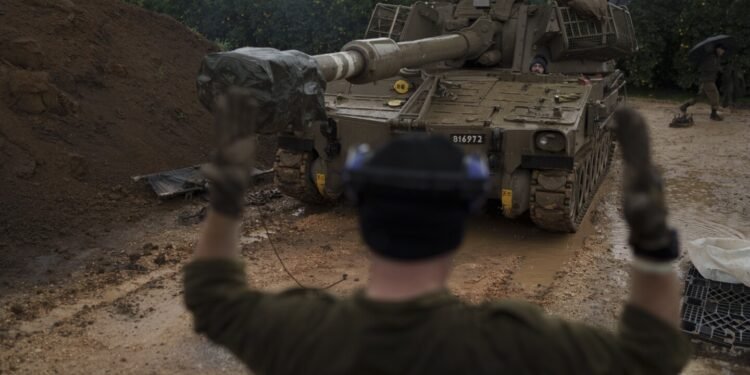BEIRUT (news agencies) — The prospect of a full-scale war between Israel and Lebanon’s Hezbollah militia terrifies people on both sides of the border, but some see it as an inevitable fallout from Israel’s ongoing war against Hamas in Gaza.
Such a war could be the most destructive either side has ever experienced.
Israel and Hezbollah each have lessons from their last war, in 2006, a monthlong conflict that ended in a draw. They’ve also had four months to prepare for another war, even as the United States tries to prevent a widening of the conflict.
Here’s a look at each side’s preparedness, how war might unfold and what’s being done to prevent it.
The 2006 war, six years after Israeli forces withdrew from south Lebanon, erupted after Hezbollah captured two Israeli soldiers and killed several others in a cross-border raid.
Israel launched a full-scale air and ground offensive and imposed a blockade that aimed to free the hostages and destroy Hezbollah’s military capabilities — a mission that ultimately failed.
Israeli bombing leveled large swaths of south Lebanon and Beirut’s southern suburbs. Hezbollah fired thousands of unguided rockets into northern Israel communities.
The conflict killed some 1,200 Lebanese, mostly civilians, and 160 Israelis, mostly soldiers.
A United Nations resolution ending the war called for withdrawal of Israeli forces from Lebanon and a demilitarized zone on Lebanon’s side of the border.
Despite the deployment of U.N. peacekeepers, Hezbollah continues to operate in the border area, while Lebanon says Israel regularly violates its airspace and continues to occupy pockets of Lebanese land.
An Israel-Hezbollah war “would be a total disaster,” U.N. Secretary-General Antonio Guterres warned last month, amid a flurry of shuttle diplomacy by the U.S. and Europe.
Iran-backed Hezbollah seemed caught off-guard by Hamas’ Oct. 7 attack on Israel, a regional ally. Since then, Hezbollah and Israel have exchanged daily cross-border strikes, escalating gradually. Israel also carried out targeted killings of Hezbollah and Hamas figures in Lebanon.
More than 200 people, mostly Hezbollah fighters but also more than 20 civilians, have been killed on Lebanon’s side, and 18 on Israel’s.
Tens of thousands have been displaced on both sides. There are no immediate prospects for their return.
Israeli political and military leaders have warned Hezbollah that war is increasingly probable unless the militants withdraw from the border.
Hezbollah leader Hassan Nasrallah hasn’t threatened to initiate war but warned of a fight “without limits” if Israel does. Hezbollah says it won’t agree to a ceasefire on the Israel-Lebanon border before there’s one in Gaza and has rebuffed a U.S. proposal to move its forces several kilometers (miles) back from the border, according to Lebanese officials.
Despite the rhetoric, neither side appears to want war, said Andrea Tenenti, spokesperson for the U.N. peacekeeping mission in south Lebanon. However, “a miscalculation could potentially trigger a wider conflict that would be very difficult to control,” he said.
Both Hezbollah and the Israeli military have expanded capabilities since 2006 — yet both countries also are more fragile.
In Lebanon, four years of economic crisis have crippled public institutions, including its army and electrical grid, and eroded its health system. The country hosts more than 1 million Syrian refugees.
Lebanon adopted an emergency plan for a war scenario in late October. It projected the forcible displacement of 1 million Lebanese for 45 days.



 Pakistan Rupee Exchange Rate
Pakistan Rupee Exchange Rate





